BMFA CONTROL LINE SPEED NATIONAL CHAMPIONSHIPS
BARTON MODEL FLYING CLUB
5th, 6th ,7th September 2025
The 2025 BMFA Control line speed Nationals were once again held at the Barton Model Flying Club site near Manchester. The Barton club had done a great job in preparing the site for the Speed Nationals.
The weather was very kind to the competitors and held out with good flyable weather until the end of the competition, literally just after the last competition flight was held then the heavens opened.
There were 25 entries in 6 different classes and over 60 flights were made making the circle a busy place almost all of the time. A very welcome addition to this years CL speed Nationals, were two entries from Italy, these being Paolo Del Bianco and Renato Durigon along with their very capable translator Alessandro Bonotto. Christine Watson did a great job with the Transitrace and also managed to keep us under control and the flying list orderly! There were two new records set, of which more later.
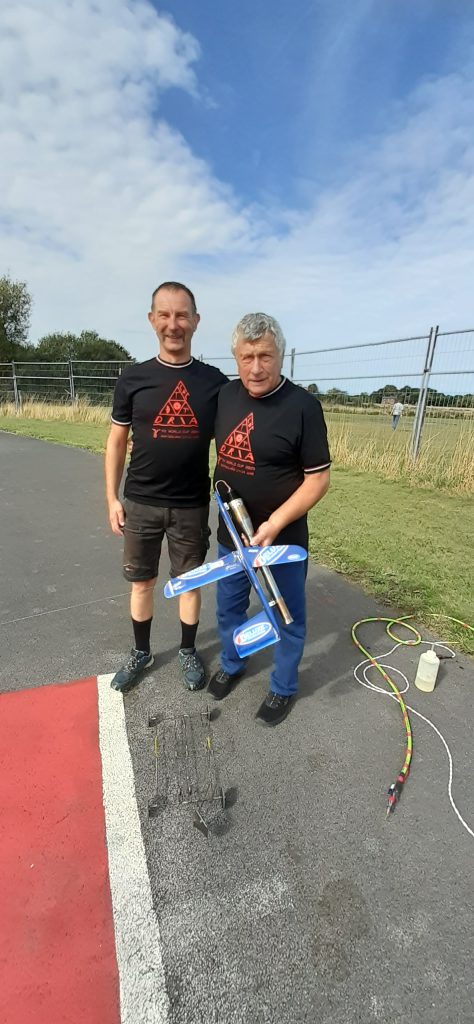
Paolo Del Bianco and Renato Durigon from Italy
F2A
There were three entries in F2A and the flying was done on Saturday and Sunday. Paul Eisner made two flights on Saturday at 297.3 and 298.2kph but the magic 300 kph eluded him in the wind. However, on the Sunday we made an early start because of the rain promised by mid-day and Paul pulled off a great 300.1 kph for the win.
Matthew Hart had acquired a HS15R powered F2A model from Peter Halman as the Irvine 15R powered model he had been using is now at least 25 years old. Even so, it was still going strong but it can not compete with modern set ups. Under Peter’s guidance Matthew made a shake down flight with the new model of 283.3kph following which Peter made a few adjustments and Matthew went back into the circle for a follow up flight of 291.5kph. This is the fastest F2A flight he has ever made and so he was extremely pleased with this result for second place.
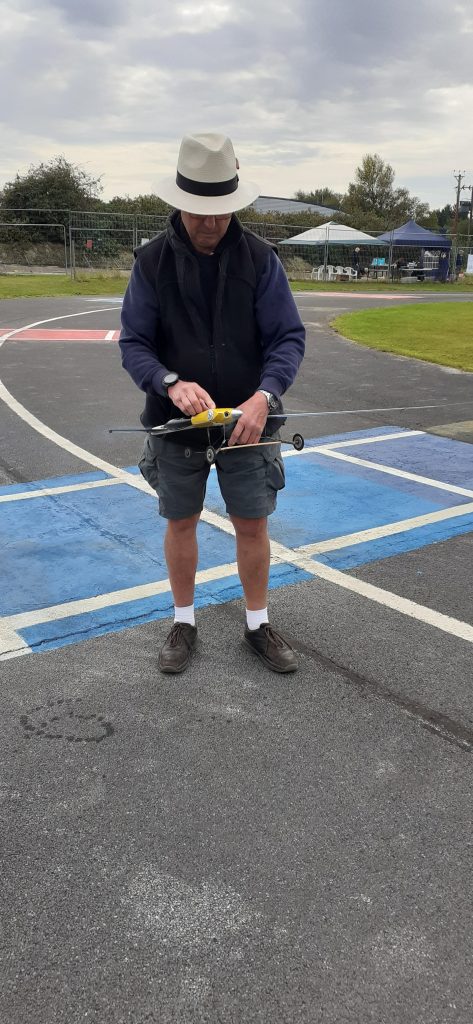
Peter Halman setting Paul Eisners winning F2A model
Barrie Lever has long harbored the desire to compete in F2A and he had acquired a model from Ken Morrissey. It has been a very steep learning curve for Barrie, he has pushed himself hard to master the art of setting up an Irvine 15R powered F2A model and flying it at speed in the pylon. Fortunately for him it all came together on Saturday and after a number of attempts to get a good engine setting he recorded a great 253.1kph for third place.
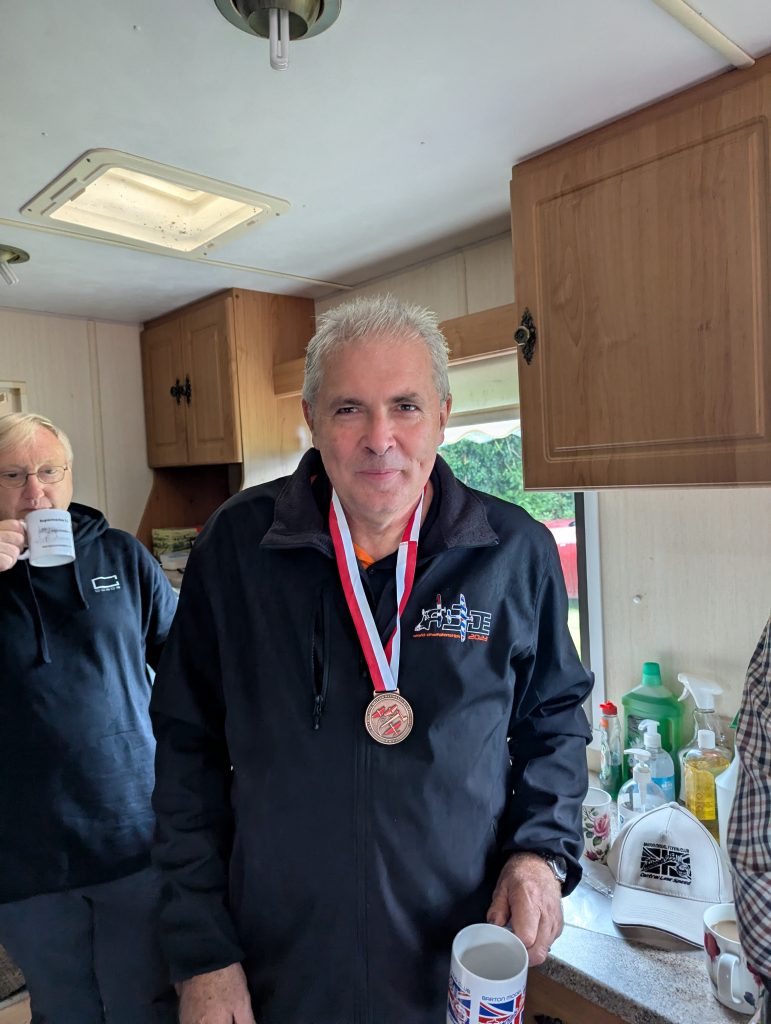
Barrie Lever 3rd F2A
12
This is the most popular class after sport jet and is the staple class besides F2A flown at Buckminster where pulse jets are not allowed. It can also be flown as PRR 12 (Personal Record Ratio) for the pilots who are learning the art of flying and competing in the pylon. The profile CMBL trainer from France makes a good introductory model and an F2A model can also be converted to this class. There were four entries in the class, three were converted F2A models and one was a CMBL trainer.
Peter and Paul are steadily increasing the outright record and the weekend saw the competition continue. Peter is recovering from a very recent knee operation so it was great to see him at the Nats and in such good form. Paul was flying for him as it is way too early for Peter to attempt to run around the pylon. On Saturday Peter flew first for 156mph dead. Paul immediately came back with 156.9mph. Later Peter flew again for 158.7mph which is a new record at 101.4%. Paul then flew again for 157.1mph. On the Sunday morning Paul made a flight of 158.4mph for second place at 101.2 % of the record. Peter also had a flight but could not improve on his record speed, returning 157.9mph.
Matthew was flying a modified F2A model originally built by Gordon Isles at least 25 years ago. He had flown it before on an APC prop but had fitted it with a single blade prop for the competition. Surprisingly it was hardly any faster, which probably means looking for a better single blader. His first flight was 139.5mph for third place, but then his second flight was slower at
136.7mph. He discovered that his wing had come slightly loose which would account for the reduced speed.
Tony Goodger had his car break down on the way up to Barton on the Thursday and after a good deal of negotiation over the phone managed to get a replacement hire car until his car is repaired. Notwithstanding this distraction, Tony was flying a CMBL trainer with an Irvine 12R engine (as, incidentally, were all of the 12 class competitors). He had previously recorded a flight of 62.7mph earlier in the season but with a little know how and assistance from Peter, Tony made flights of 98.1 and 96.8mph. On a PRR basis this represented an improvement of 105.1 % which is a commendable result.
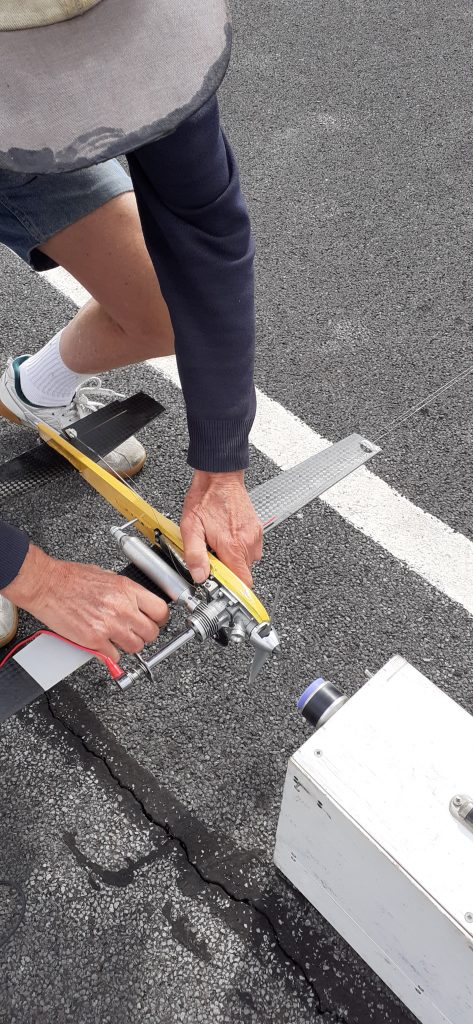
CMBL 12 Speed training model
Malcolm Ross had his K&B15 series 64 powered Pink Lady model which flies on the same line length as the 12 class so we let him have a go with it. Malcolm is of course an accomplished team race mechanic and pilot but has little experience of flying in the pylon. Nevertheless he was determined to record a time and used his first attempt on Saturday to get used to the pylon but couldn’t stay in. With true grit and determination he then went back out, stayed in the pylon, and made a great flight at 114.6mph. This model flies beautifully, it was originally for monoline and designed by Bill Wisniewski in the early 1960’s. It won the world championships in 1964. Paul Eisner also has a monoline replica which flies equally well if not better than the two line version.
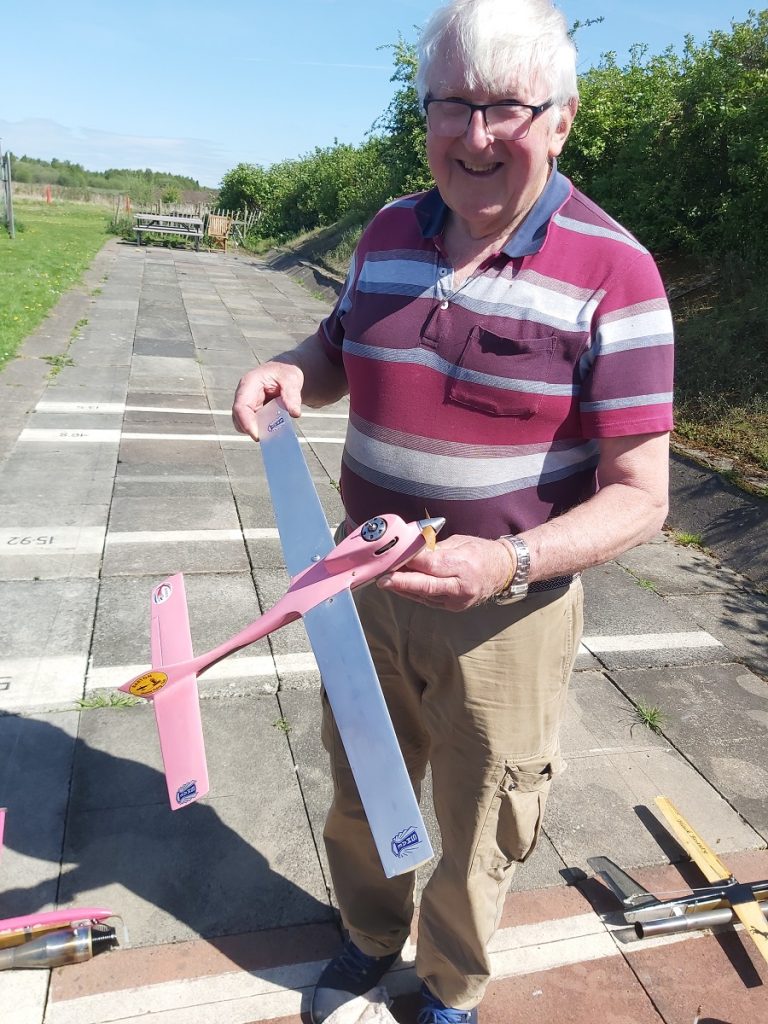
Malcolm Ross with K&B 15 powered Pink Lady
29
Matthew Hart has an OPS 29 powered asymmetric model built by Chris Martindale. It has been previously flown on nitro fuel at around 150 mph. However the Italians are proposing a 29 class in Italy to run straight fuel on F2A length lines, (more later). Matthew made a couple of practice flights on straight fuel to get a setting and to see how the engine responded to the pipe. He then made a couple of official flights on Saturday, first 134.5mph on an APC 7×6 and then 142.3mph on an APC 7×8. The tank is way too big, doing team race laps without a shut off, which it surely needs.
Nevertheless the model has potential on the shorter F2A lines and remains a work in progress.
Sport Jet
This is the most popular speed class. It is flown throughout the season at Barton and has a regular and very competitive following. Although sport jet engines are no longer made by any manufacturer there are still plenty of them lurking on shelves around the country. Engines that meet the rules include Dynajet, Bailey Sport Jet, Jet Bill Sport Jet, PCPJ sport Jet, HobbyKing Red Head and Dick Hart has plenty of spare parts available. There were ten entries with 26 practice and official flights over the three days burning over two gallons of 80:20 methanol/nitromethane sport jet fuel.
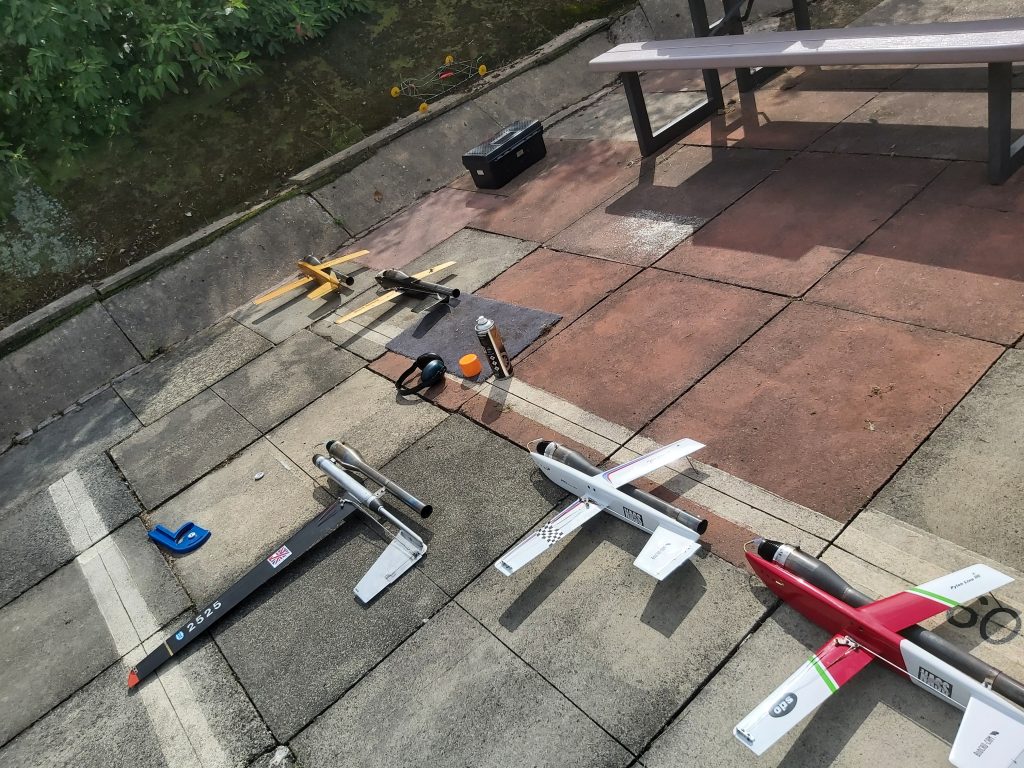
Sport Jet line check area
There were a number of practice flights on the Friday and Matthew made an official run of 135.4mph.Andrew Watson then made a run of 141.8mph. On Saturday the Sport jet flights came fast and furious with Matthew 134.8mph, Ken 146.1,146.5,146.1mph, Andrew 130.1,143.6mph, Dick 136.3, 145.9, 146.1mph, Renato Durigon 120.3mph (Dick’s fault because he did not tighten the adjustable lead-out guide and it ran all the way to the rear in flight.), Barrie 143.0 and 140.6mph, Steve Simpson 145.2,146.0, 145.2mph, Joe Gough 131.2mph, Joe Harvey (flying his Dad’s model) 137.4, 140.5, 141.3mph, Paolo del Bianco 137.5mph.
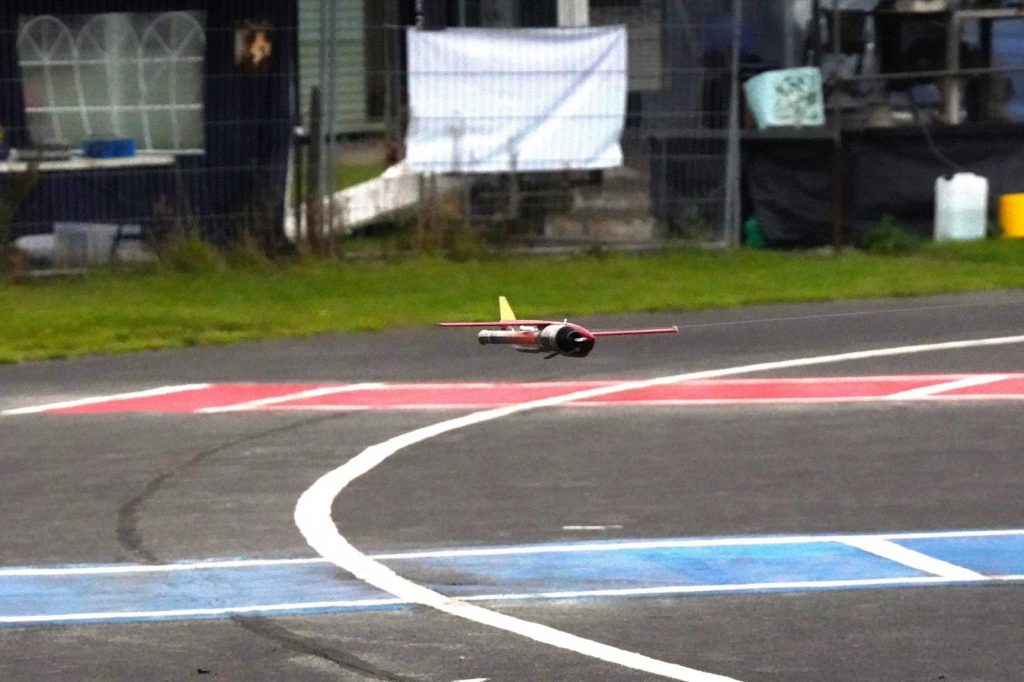
Sport Jet in flight (note tail pipe glowing)
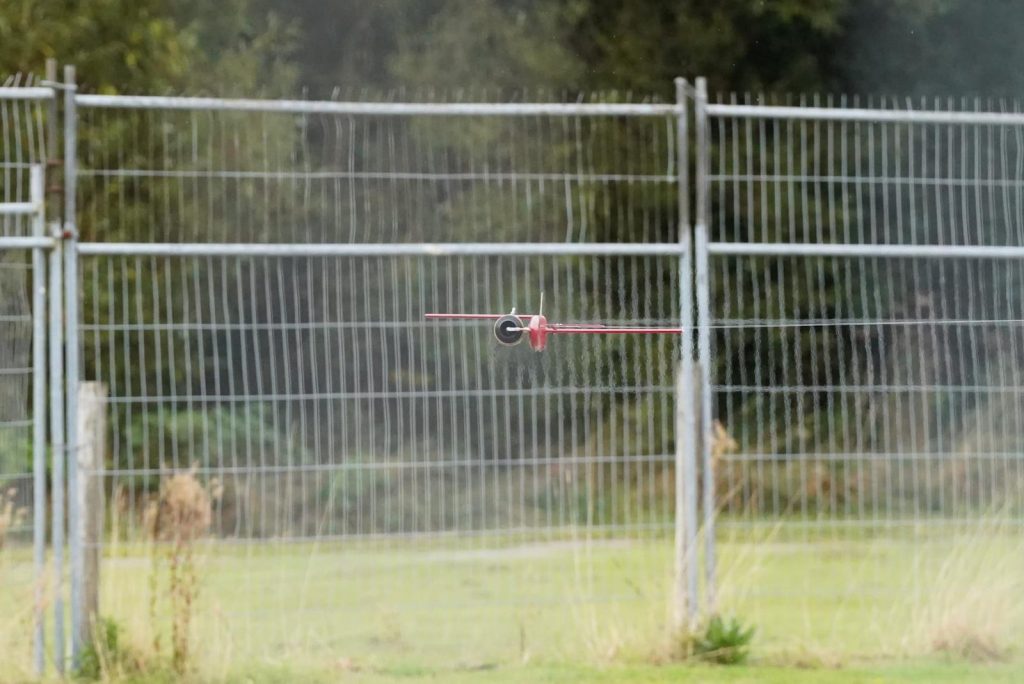
Joe Harvey’s Sport Jet model caught in flight.
The pilot duties were shared between Matthew, Paolo, Barrie and Joe who all did a tireless job. Steve Simpson was campaigning a brand new model built by Barrie Lever which in truth was only finished on the Friday morning at Barton.
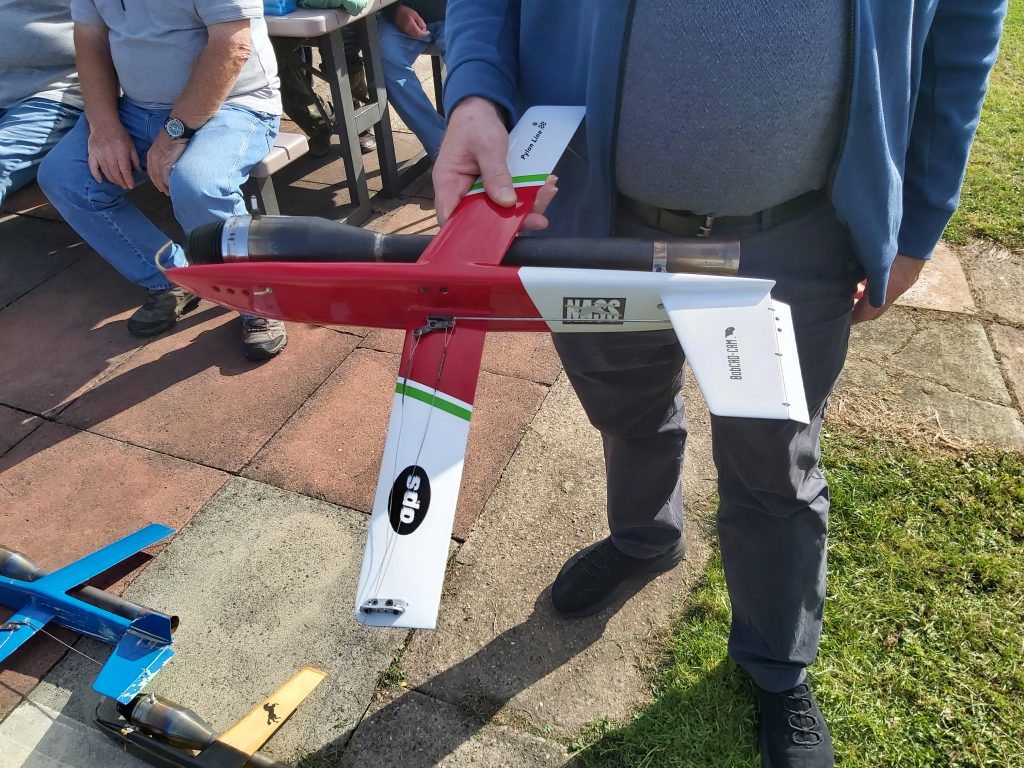
Steve Simpsons OPS themed Sport Jet model.
It flew brilliantly right off the board for third place and Dick only pipped him for second place by 0.1 mph. First place in Sport Jet went to Ken Morrissey whose model is now a testament to the healing power of JB Weld, having developed a tank leak on Friday which Ken repaired overnight with the magic stuff. Joe Gough desperately wanted to compete with an upright model he had built some years before but he has had no luck at all getting it off the ground. No matter how hard he tries, it will insist on running in on take-off. It really does have a mind of its own. In the end he was persuaded to fly a sidewinder. We will continue to help Joe get that model into the air, it will fly one day!
Italian Sport Jet
Let’s discuss this class for a minute or two and explain how we arrived at this class. Timing for almost all of the BMFA speed classes is over 1 kilometer (the only exception is the 0.049 class). 12 is over 10 laps with a line length of 15.92m; F2A, 15,and 21 are over 9 laps with a line length of 17.69m and everything else is over 8 laps with a line length of 19.9m. When we were able to fly on MOD sites with either a parade ground or a runway or on abandoned airfield sites, this all worked just fine. However, these days the only dedicated flying site in the UK with a circle big enough to safely accommodate open speed classes on 19.9m lines is Barton. As far as I know most of the TR/Speed circles in Europe, including Buckminster, are sized for F2 TR/Speed competition with line length up to 17.69m.
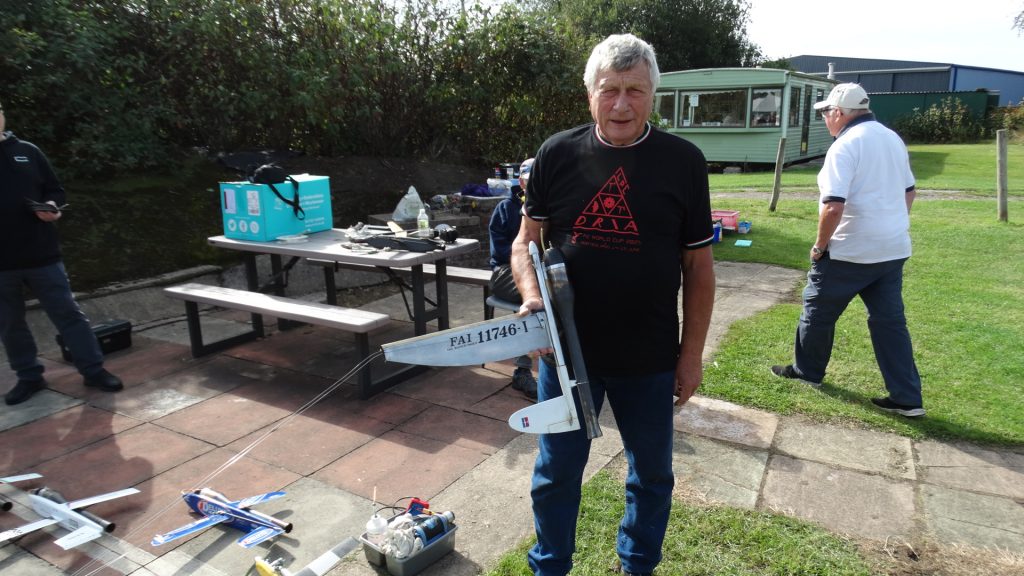
Renato Durigon with Italian rules Sport Jet
Click the link below to see Renato’s winning flight.
Renato Durigon winning flight at BMFA Speed Nationals
As a result the Italians, who can be quite inventive, decided to introduce some classes in Italy other than F2 but using the F2 line length because of their circle size limit. The first of these is Italian Sport Jet which was introduced by Gruppo Hangar 82 (a model flying club) at Mortegliano, Udine. Barrie, Matthew and I decided that it might be good fun to take the Italians on and so we have attended their World Cup event for the last two years where one of the events besides F2A is Italian Sport Jet. Essentially our Sport Jets but running petrol fuel and on 17.69m lines. To help us practice the Italian rules were adapted and adopted by the BMFA as a class.
We are very used to running our jets on our 80:20 sport jet fuel, but finding the right setting for E5 petrol is an art form. Unlike our metering system where we use individual jets that go in 0.001thou increments, they use a variable metering jet. Renato Durigon sets his by blowing through the metering jet and tuning it. They call him “Strawberry Lips” because he is pretty good at it! Nevertheless, Matthew has come second each time although Dick and Barrie have never yet had a good run, but we will keep trying because we are certain we will succeed eventually.
During discussions after the Nationals presentations at Barton this year, another F2 line length class was proposed by Paolo which is to have a 2.51 to 5cc class on straight fuel, running a pipe or a super silencer using the same line diameter as the Italian Sport Jets (0.5mm). The assembled company was generally in favour and so we will work with our Italian friends to come up with some rules for adoption here and in Italy. It will help us here in the UK because it will be another class that can be flown at Buckminster.
Anyway, back to the competition, Renato was first up on Friday but even with his “Strawberry Lips” could not get a running setting, the Manchester weather is a lot different to what they are used to and the engines needed a richer setting. He came back for a second run later and recorded 151mph, a new record by 1mph. On Saturday Renato made a second run, this time at 152.7mph, 101.8% of the record and fast enough not only to win Italian sport Jet but also to win the Handicap. Paolo then made a respectable run of 147.3mph for second place. On Sunday Paolo made another flight for 146.1mph and Matthew flew 140.2mph for third place.
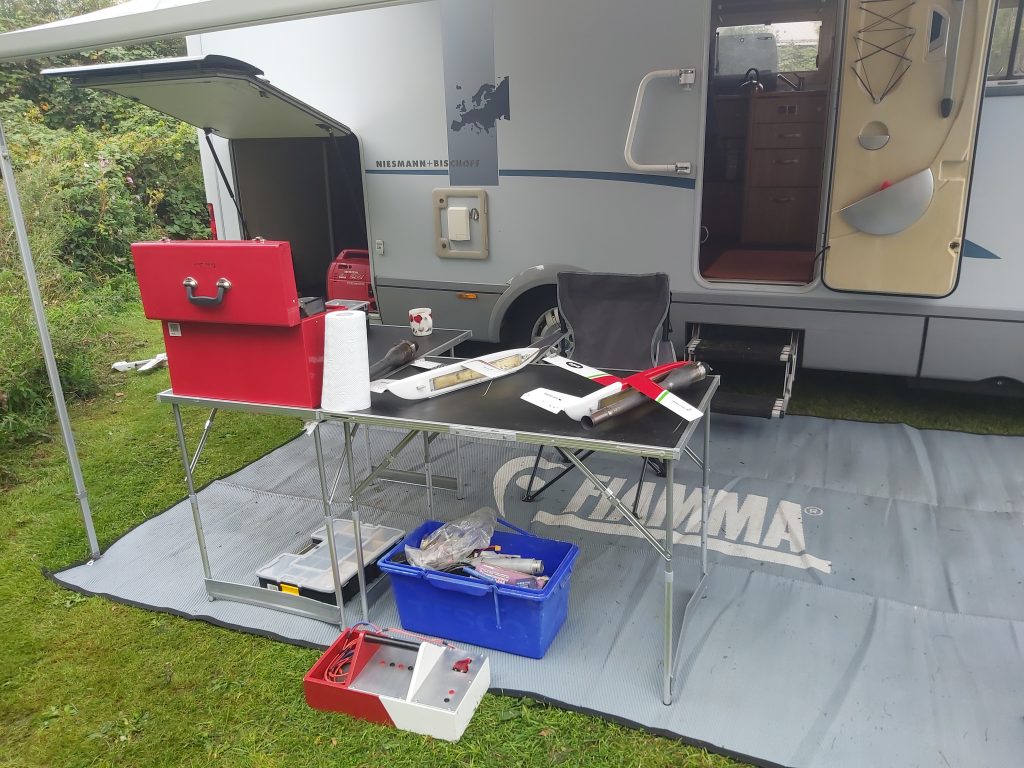
Simpson/Lever pit area
Fast Jet
Sadly there was only one run in this class and unfortunately the Transitrace sensor had not been moved out from the 12 class position so not only could it not properly time the flight, when the model was landing it hit the protective cover which bounced the model into the centre of the circle. Fortunately the model had slowed down a lot after two glide laps and there was no real damage to it although as Contest Director, I felt rather foolish for overlooking such an elementary check. What numbers we did get indicated an airspeed of around 205 to 208 mph.
This was on the Friday and Matthew had another go with a different model on Sunday but unusually the model ran in on take-off. He then piloted for Barrie with his fast jet and unbelievably exactly the same thing happened to his model. The conclusion is that there might be something wrong with the dolly, the same one was used for both launches, or we were trying to take off in the wrong wind segment, or a combination of the two. We do not fly Fast Jet as often these days, the launch acceleration is vicious and likely amplifies any deficiencies in the launch process. Lack of practice starting and launching will not have helped. Anyway no real damage to the models, just bruised egos.
Renato also had a World Record Challenge model with him which he wanted to test. It is on 19.9m lines and so it is almost impossible to fly it anywhere except Barton. It is basically a larger version of their usual Sport Jet design. The engine is a Zanin Z23 which has a larger combustion chamber than the usual Zanin Z26, and although the heads are interchangeable, the Z23 venturi is larger than the Z26. The Z23 combustion chamber has a diameter of 80mm which is the FAI mandated limit for this record class. The model was running on petrol and started easily, however Paolo who was piloting reported some instability in flight and the speed was only 122.2mph.
A word or two about the FAI regulations for World Record Flights as they pertain to control line pulse jets. As already mentioned, the jet is only limited by the diameter of the combustion chamber to 80mm. There are no restrictions as to lines, as long as they withstand the pull test. However if the model is to be flown on monoline, the entire twist mechanism has to be behind the yoke meaning that only a lighting fast contortionist could manage to successfully fly the model. That means a two line approach is favoured and groupers are acceptable. The principle limiting factor is that the model weight including fuel, divided by the total projected area must not exceed 100grams per square decimeter. As the fuel load is about 100grams for petrol or over 200 grams for a nitro fuel mix, this alone can add one to two square decimeters to the area. A 1 kg model is difficult to achieve when it has to have an area of 12 square decimeters to account for the fuel. Nevertheless Barrie, Ken, Dick and Matthew are working on a new approach for another record attempt in the future.
OPS B20
Steve Simpson had brought along one of two OPS B20 engines he owns and he and Barrie ran it up during lunch on Saturday, Alessandro Rossetti who was the development engineer at OPS was consulted about the setup and running procedure for the B20. It is a two cylinder in line 20cc glow motor intended for boat applications. Gualtiero Picco of OPS and later Picco engine fame designed and built the prototype during a brief vacation in 1974. These are rare engines and to see one running is very exciting for an engine nut. These things scream!
Video link below
Model Engines – Old and New | Number 7 OPS B20 Test run. | Facebook
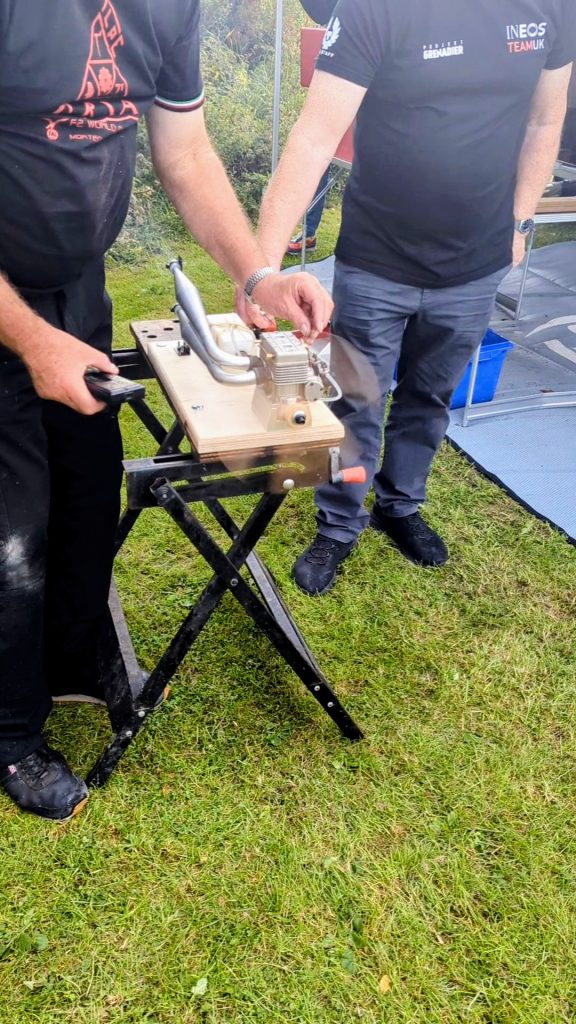
OPS B20 on test stand
Prizegiving and wrap up.
As the rain closed the Competition for us at noon on Sunday, the prizegiving was held out of necessity in the club house. This year the Barton Club gave every entrant to the Nationals an embroidered polo shirt and baseball cap and everyone that recorded a flight received a commemorative mug.
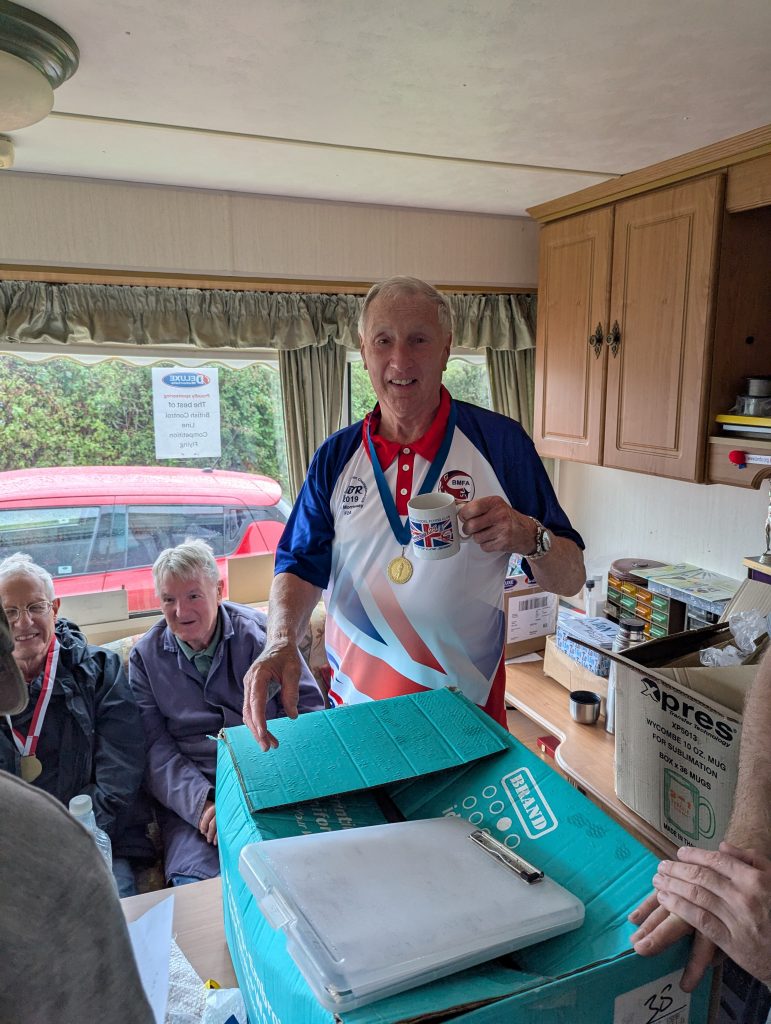
Ken Morrisey with Nats coffee mug
BMFA Medals were awarded for first second and third places in F2A to Paul Eisner, Matthew Hart and Barrie Lever respectively and also in Handicap Speed to Renato Durigon, Peter Halman and Paul Eisner respectively. Barton Club also gave first, second and third medals in Sport Jet to Ken Morrissey, Dick Hart and Steve Simpson respectively; also for Italian Sport Jet to Renato Durigon, Paolo Del Bianco and Matthew Hart respectively.
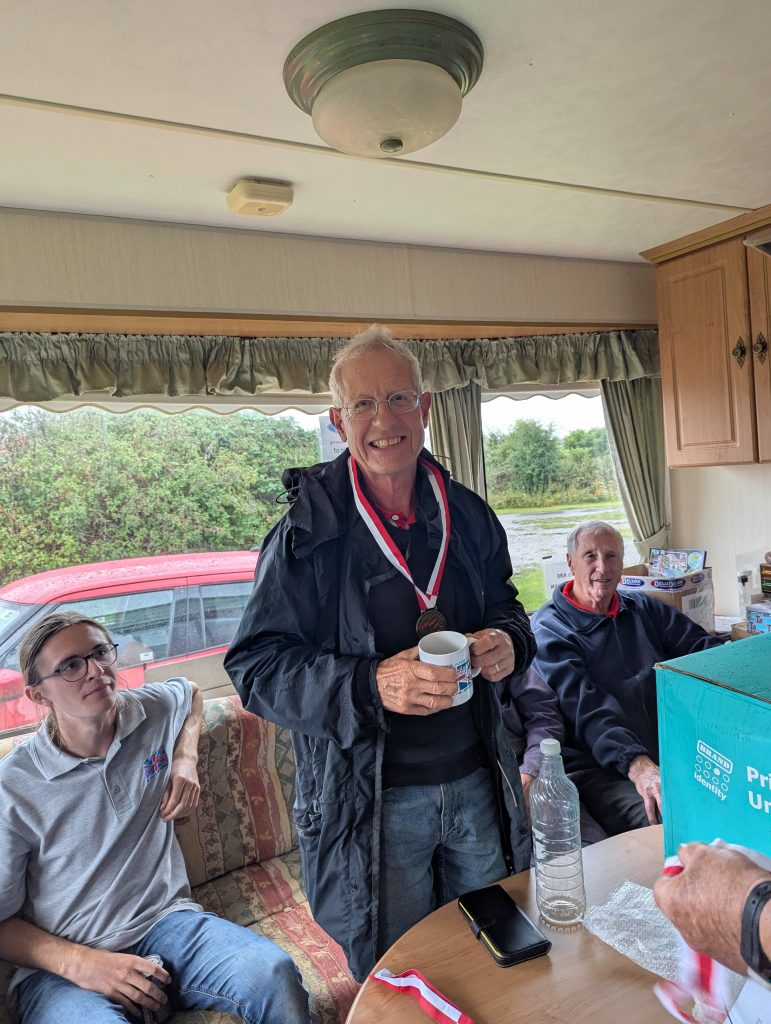
F2A winner Paul Eisner
It only remained for everyone to pack up their stuff and say their good byes, Fortunately the heaviest of the downpour had passed by the time we had stopped talking in the clubhouse so no one got completely soaked!
It was good to see our friends from Italy come to Barton and compete so well and it will be great to welcome them and others back to Barton in the future. Hopefully some of us will be able to return the compliment at their Modigliano World cup event next June. A number of us took them to the Black Swan in Warrington on the Friday evening for a traditional pub meal which was very relaxing and enjoyable.
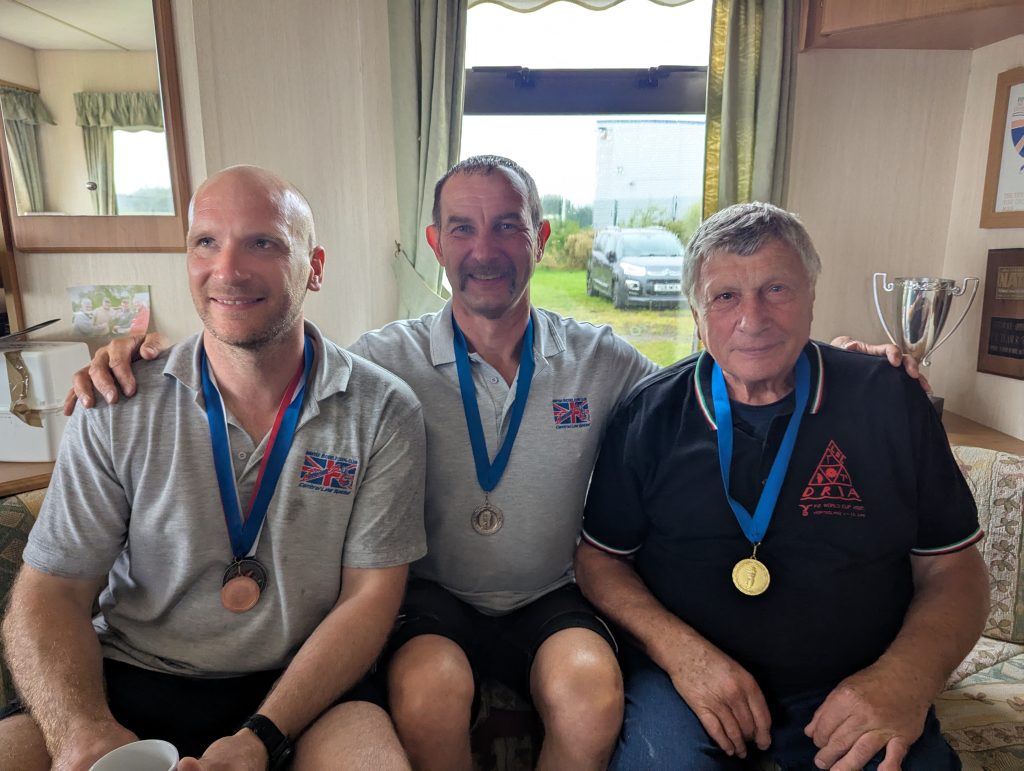
Italian Sport Jet 3rd, 2nd and 1st
A great big thank you from all the participants to the members of the Barton Club who worked so hard to get the flying field in such great shape, also for the support they provided for the smooth running of the event and for the prizes and additional medals. A special thank you to Christine Watson for running the flying list and the Transitrace, she did a splendid job. Also big thanks to Alessandra Bonotto who did all of the translation for Paolo and Renato.
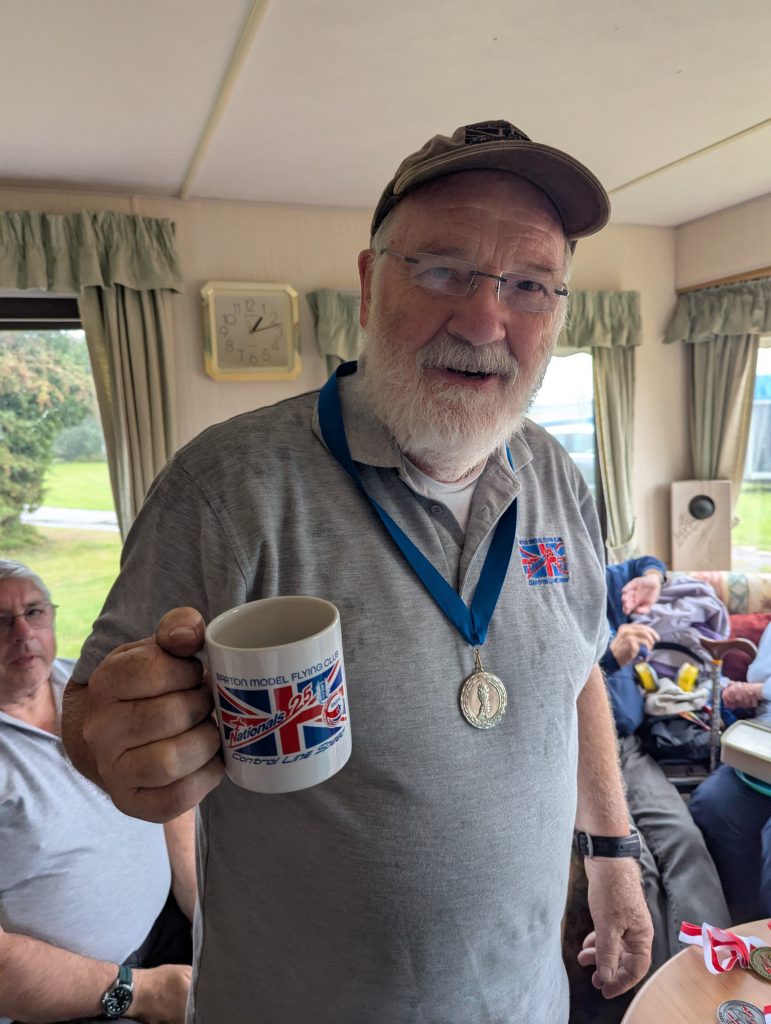
Dick Hart, the driving force behind the 2025 BMFA CL Speed Nationals
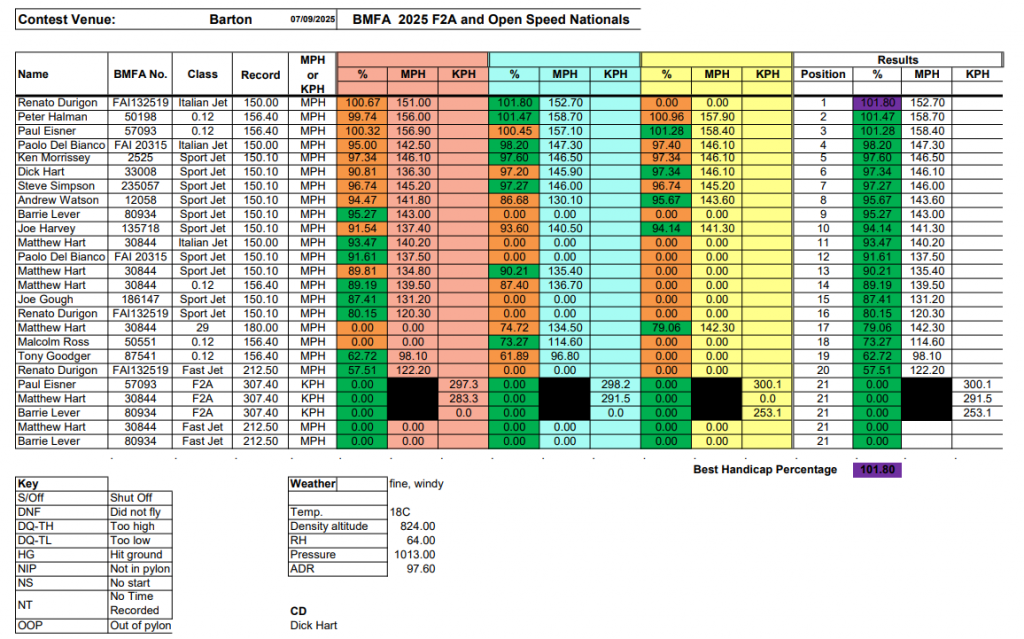
Photo credits Shane Egan, Andrew Watson, Barrie Lever, Dick Hart, Malcolm Ross.
Text, largely written by Dick Hart